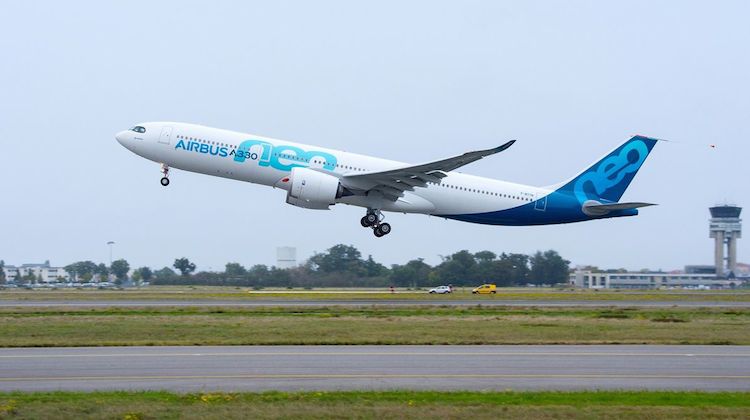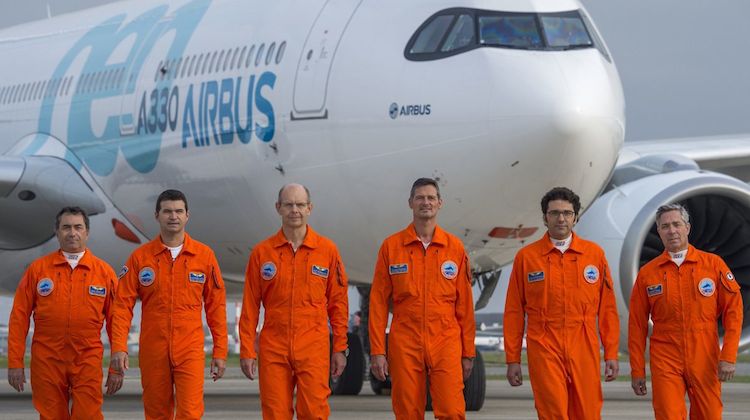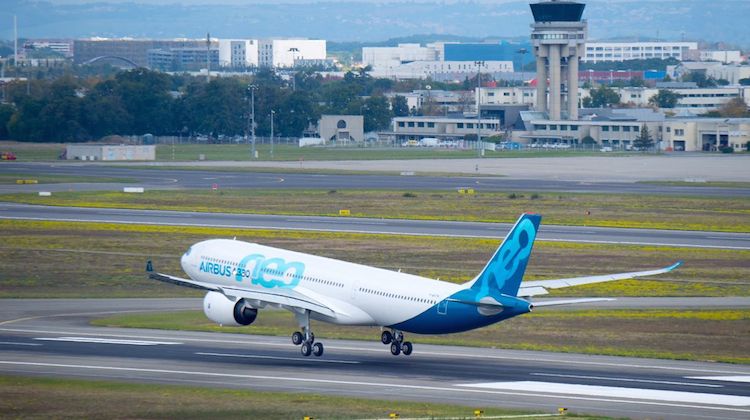
Airbus says it is aiming to achieve certification of its re-engined A330neo widebody by the middle of 2018 after the A330-900 successfully completed its first test flight.
The first of three test aircraft, MSN1795, an A330-900 with registration F-WTTN, took off from Airbus headquarters at Toulouse on Thursday morning (local time), landing some four hours and 13 minutes later.
Airbus Commercial Aircraft president Fabrice Brégier said in a statement: “Today’s first flight of the A330neo marks yet another milestone along the Airbus journey of continuous innovation.”
“We look forward to a successful flight test campaign and entry into service of the A330neo in 2018.”
Airbus said the flight test fleet would comprise two A330-900 and one A330-800 aircraft.
The company said the campaign to achieve certification from the European Aviation Safety Agency and US Federal Aviation Administration by the middle of 2018 would comprise 1,100 flight hours for the A330-900, which is being certified first, and 300 flight hours for the A330-800.

Launched at the Farnborough Airshow in 2014, the A330neo features new Rolls-Royce Trent 7000 engines and a larger wing with ‘Sharklet’ wingtips to reduce fuel consumption.
The type is also the launch aircraft for Airbus’s “AirSpace by Airbus” cabin concept which features larger overhead compartments, wider seats and aisles and new lighting, a “welcome area” and removal of the inflight entertainment box taking up legroom under the seat in front.
There are two A330neo variants – the A330-800 is the replacement for the A330-200 currently flown by Fiji Airways, Qantas and Virgin in this part of the world, while the A330-900 is the replacement for the larger A330-300.
Qantas and Fiji Airways also operate the larger A330-300.
There is 95 per cent commonality between the A330neo and current A330 variants.
The A330-200 has a typical range of 7,250nm when configured with 247 passengers, according to the Airbus website, while the A330-800 will have a range of 7,500nm with 257 passengers in a three-class layout.
Meanwhile, the A330-300’s typical range is 6,350nm with a 277-passenger configuration, compared with 6,550nm for the A330-900 configured with 287 seats in three classes.
TAP Portugal is the launch customer of the A330neo, with 14 A330-900s on order. The sole customer in Oceania is Aircalin, which ordered two A330-900s in November 2016.
Airbus said it has received 212 A330neo orders from 12 customers.
However there are fresh doubts as to the viability of the A330-800 variant, with Hawaiian Airlines reviewing its order six of the type, CNN reported in early October. Hawaiian is the only customer for the smaller A330neo.












